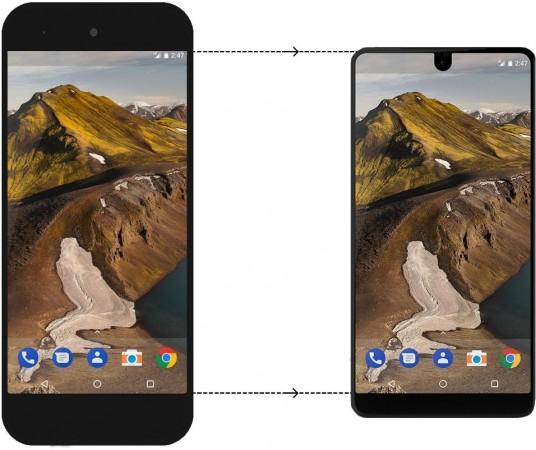
The quest for the perfect mobile experience often boils down to a simple equation: maximize screen real estate while maintaining a comfortable phone size. In 2016, this equation seemed impossible to solve. Bezels – those thick black borders surrounding phone displays housed essential components like the front-facing camera and sensors. Eliminating them meant cramming everything into a smaller space, a seemingly insurmountable challenge.
Then came the rise of edge-to-edge displays with display cutouts popularly known as "the notch". This innovative technology offered the promise of larger screens on phones that remained comfortably sized. However, a new obstacle emerged: app compatibility. Applications, designed for a world of rectangular screens, weren't equipped to handle the notch. Important UI elements, like buttons and menus, risked being obscured by the cutout needed for the front camera and sensors, causing frustration and hindering usability. This compatibility issue even affected Android certifications, preventing phones with edge-to-edge displays from entering the market.
Enter Essential Products, a company founded by the creator of Android. Unfazed by the challenges, Essential became the first company to launch a phone with a notch – the Essential Phone (PH-1), even before Apple's iPhone X. Simply launching a phone with a notch wasn't enough. Essential understood the app compatibility issue was the key hurdle. Here's where the company's true innovation shined.
The Android Framework team at Essential, led by Software Director Adithya Gajulapally and Framework Lead Uchinta Boddapati, embarked on a meticulous mission. They analyzed hundreds of popular apps to understand how the notch could disrupt user experience. By identifying recurring patterns in app design, they were able to develop a solution within the Android framework itself. This ingenious approach meant apps wouldn't require individual redesigns to function properly on phones with notches. Essentially, the framework team created a system that intelligently adjusted apps to work seamlessly with the new display format.
Essential didn't stop there. Recognizing the potential of the technology, they collaborated with the top 100 apps in the Play Store. This collaboration ensured these crucial apps not only functioned flawlessly on phones with notches but also took advantage of the extra screen space for enhanced functionality.
This resulted in Essential's implementation in Android versions 7 to 8.1 receiving widespread industry praise. The impact was monumental. Google, recognizing the ingenuity of Essential's approach, adopted most of their framework solutions into Android versions from 9 onwards. Furthermore, Essential's patents became the gold standard, cited by phone and tablet manufacturers across the industry.
The impact of Essential's innovation extends far beyond Android smartphones. Apple's recent patent for the "Dynamic Island" feature on Macbooks even cites Essential's work, demonstrating the groundbreaking nature of the notch concept.
Thanks to Essential's pioneering efforts, billions of users worldwide can now enjoy the benefits of smaller phones with larger, immersive displays. This innovation stands as a testament to the power of tackling seemingly insurmountable challenges and the lasting impact a single company can have on the entire mobile landscape. The notch, once a controversial design element, has become a cornerstone of modern phone design, allowing users to truly experience the joy of a phone that fits comfortably in their hand while delivering a maximized viewing experience.














